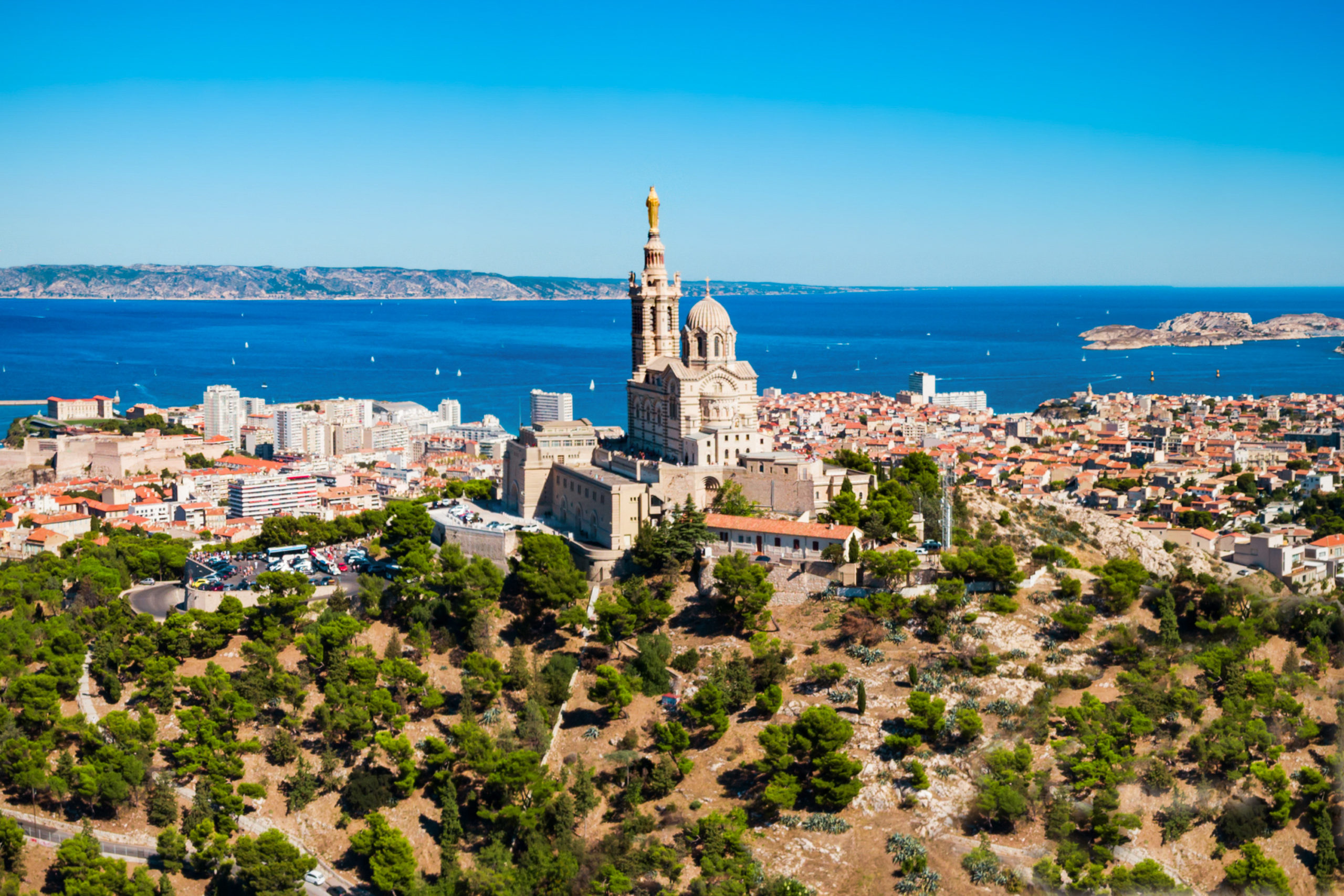Marseille is far more than its picture-postcard images suggest. France’s second city blends different eras and atmospheres against a Mediterranean backdrop. The calanques rub shoulders with tower blocks, luxury yachts pass traditional fishing boats, and pastis flows as freely in trendy bars as it does in the old cafés of Le Panier. You can explore the city on foot, by boat, metro or car, depending on your mood and destination. The neighbourhoods shift dramatically from one hill to the next: well-heeled around Endoume, working-class in Noailles, hip along the Cours Julien. This diversity is what makes Marseille tick, far from the well-trodden tourist trails. The surrounding area is equally worth exploring, with its Provençal villages and wild coves. Here are the places and experiences that capture the pulse of the city and its surroundings.
The essentials of the Vieux-Port and historic centre
The Vieux-Port remains the perfect starting point for discovering Marseille. This rectangular harbour, lined with restaurants and cafés, hosts the daily fish market on the Quai des Belges each morning. Fishermen sell their catch of the day straight from their colourful boats. Despite the tourist influx, the place keeps its authenticity, thanks largely to the locals who still come here for their evening aperitif.
From the port, the tourist train climbs up to the Notre-Dame-de-la-Garde basilica. The ascent is also worth doing on foot for those feeling energetic, via the steps on Boulevard Gazzino. The “Bonne Mère” (Good Mother), as locals call it, dominates the city from its 154-metre perch. The basilica’s interior surprises visitors with its maritime ex-votos: model ships hanging from the ceiling, paintings depicting miraculously avoided shipwrecks. The terrace provides 360-degree views over Marseille, the Frioul islands and, on clear days, as far as the Sainte-Victoire massif.
Le Panier district spreads across the slopes north of the Vieux-Port. Its narrow streets now house artists’ workshops, designer boutiques and trendy restaurants. Place de Lenche, the former ancient forum, remains an authentic living space with its market and shaded terraces. The neighbourhood’s walls serve as canvases for numerous street art murals, particularly around Rue du Petit Puits. La Vieille Charité, a 17th-century former hospice converted into a cultural centre, merits a stop for its baroque architecture and temporary exhibitions. The Museum of Mediterranean Archaeology it houses displays remarkable Egyptian and Near Eastern collections.
Between calanques and coastline

The Calanques National Park stretches for 20 kilometres between Marseille and Cassis. These limestone rock formations plunge into turquoise waters, creating spectacular landscapes. The Sormiou calanque, accessible by car until summer, offers a pebble beach and several fish restaurants. En-Vau, wilder still, requires an hour’s walk from the Col de la Gardiole but rewards hikers with its exceptional setting. The GR98-51 coastal paths allow you to follow the shoreline whilst discovering secret coves. Be aware during hot weather: access to the hills may be prohibited due to fire risks. It’s advisable to avoid July and August and visit the calanques from late September onwards when planning your post-summer holidays.
Marseille’s beaches offer varied atmospheres. The Prado beaches, created in the 1970s using spoil from metro construction, attract families with their vast stretches of sand and sports facilities. Catalans beach, close to the city centre, retains its down-to-earth charm with its perpetually busy beach volleyball court. For more tranquillity, head to Pointe Rouge beach or the small coves along the Corniche Kennedy.
To fully appreciate Marseille’s coastline, nothing beats a trip out to sea. Boat hire in Marseille allows access to the most isolated calanques and reveals viewpoints impossible to reach from land. You can anchor in deserted coves, explore the coastal sea caves or simply enjoy the sunset over the harbour. Departures typically leave from the Vieux-Port or Pointe Rouge marina, with options ranging from traditional sailing boats to modern motorboats.
Culture and heritage
The MuCEM (Museum of European and Mediterranean Civilisations) has transformed Marseille’s cultural landscape since opening in 2013. Its cubic architecture in concrete lacework creates a dialogue with Fort Saint-Jean, which it extends via a suspended walkway. The permanent collections explore major Mediterranean themes: agriculture, monotheisms, citizenship. Temporary exhibitions, renewed several times yearly, tackle contemporary issues with boldness. The museum’s roof terrace offers a welcome break with sea views.
The Château d’If remains one of Marseille’s most visited sites. This 16th-century fortress, made famous by Alexandre Dumas and his Count of Monte Cristo, stands on a small island 20 minutes by boat from the Vieux-Port. The visit reveals the cells where Protestant and political prisoners were held. The Frioul islands, just beyond, deserve a full day’s exploration. Their wild coves, crystal-clear waters and hiking trails offer a natural retreat just a stone’s throw from the city. The Caroline Hospital, a former 19th-century quarantine station, bears witness to the archipelago’s medical history.
La Vieille Charité hosts several museums in an exceptional setting. The central chapel, a Provençal baroque masterpiece by Pierre Puget, is worth the visit alone. The Museum of African, Oceanic and Native American Arts (MAAOA) presents collections unique in France, including masks and sculptures of remarkable delicacy. The centre’s temporary exhibitions attract a discerning public, with retrospectives dedicated to major names in modern and contemporary art.

